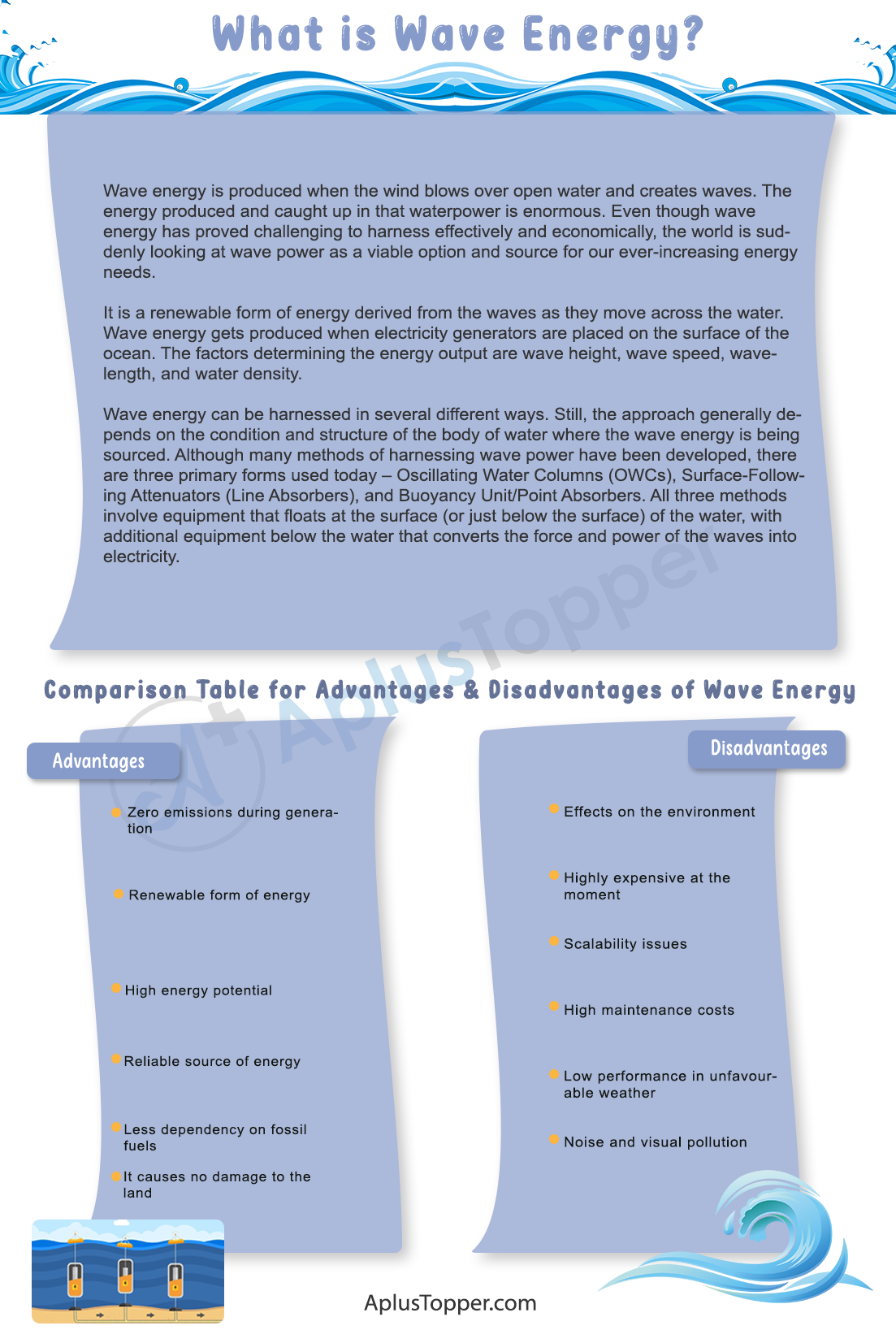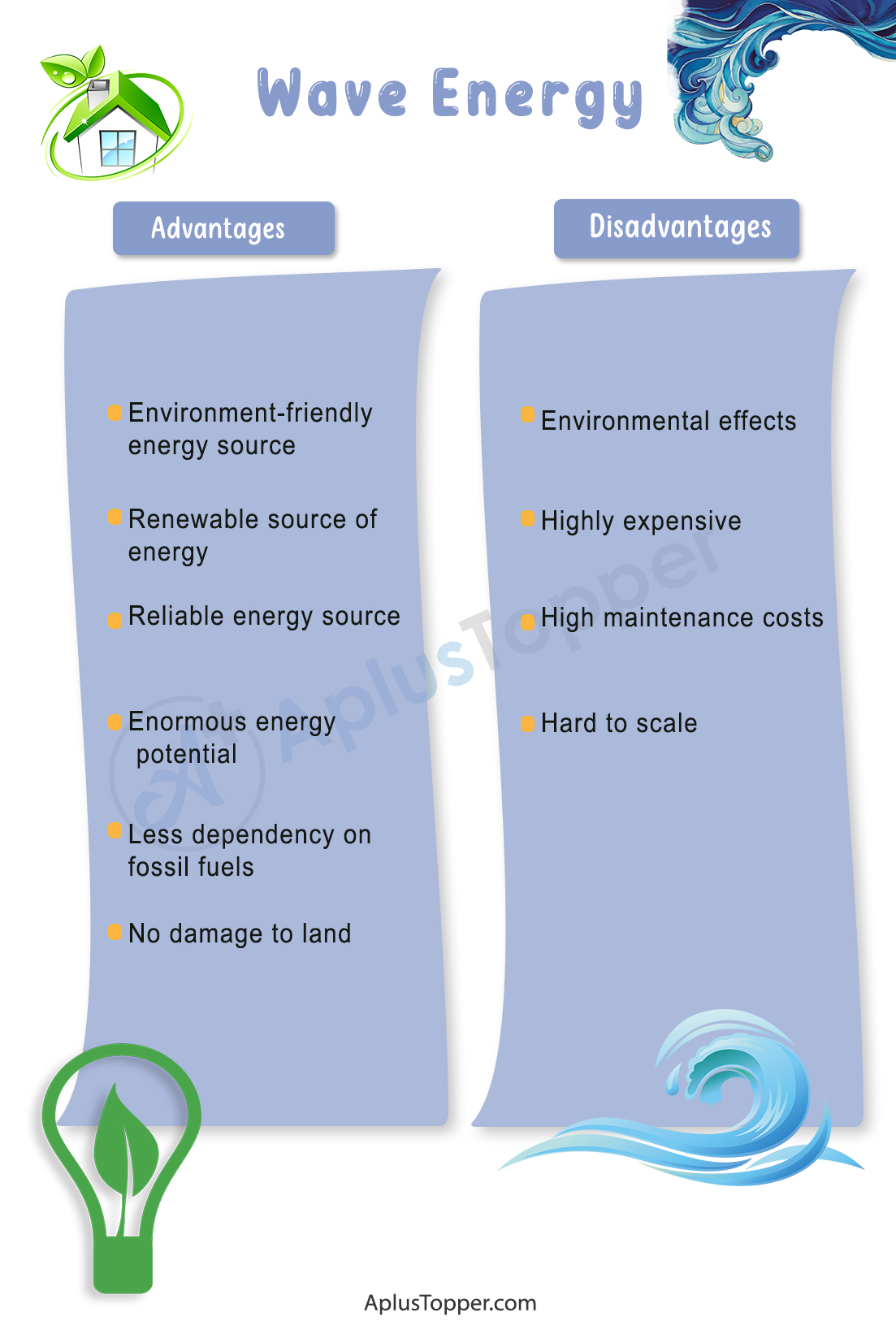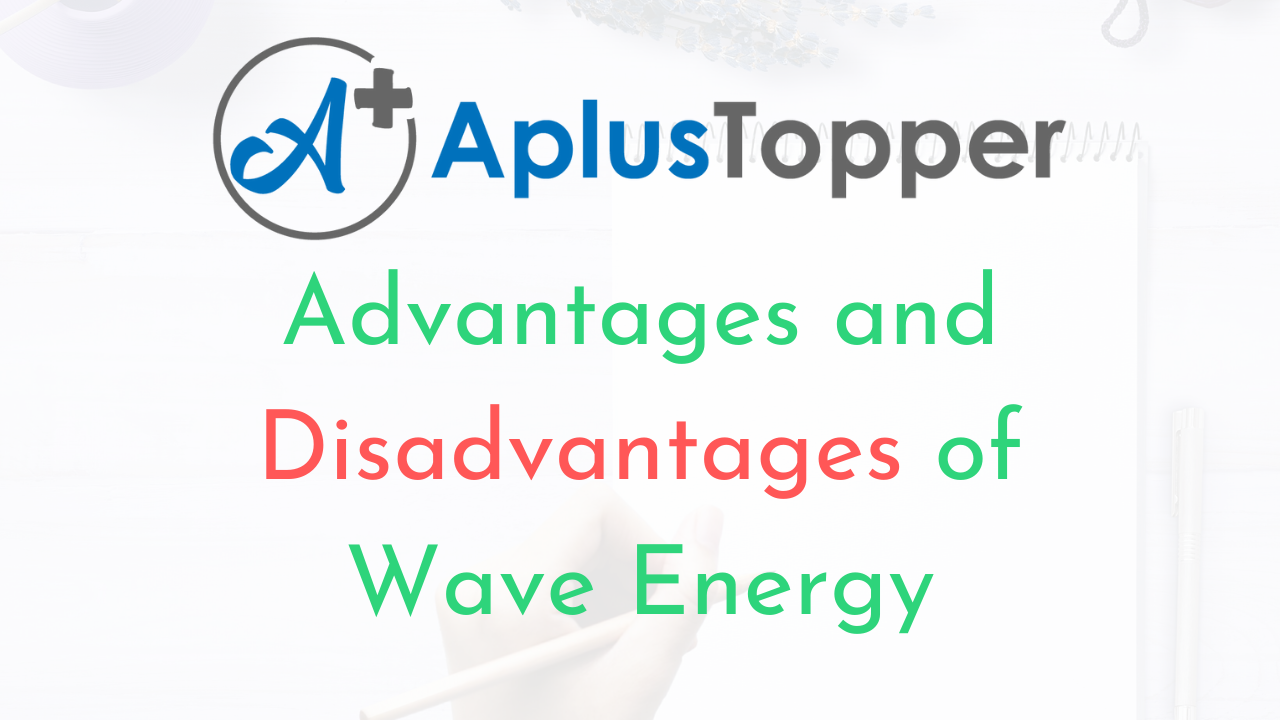Advantages and Disadvantages of Wave Energy: Wave energy or wave power is the transportation and capturing of energy by ocean surface waves. The energy captured is then used for every kind of valuable work, including electricity generation, water desalination, and water pumping. Wave energy is one form of renewable energy and is the most extensively estimated global resource form of ocean energy.
Students can also find more Advantages and Disadvantages articles on events, persons, sports, technology, and many more.
What is Wave Energy? Advantages and Disadvantages of Wave Energy 2021
Wave energy is produced when the wind blows over open water and creates waves. The energy produced and caught up in that waterpower is enormous. Even though wave energy has proved challenging to harness effectively and economically, the world is suddenly looking at wave power as a viable option and source for our ever-increasing energy needs.
It is a renewable form of energy derived from the waves as they move across the water. Wave energy gets produced when electricity generators are placed on the surface of the ocean. The factors determining the energy output are wave height, wave speed, wavelength, and water density.
Wave energy can be harnessed in several different ways. Still, the approach generally depends on the condition and structure of the body of water where the wave energy is being sourced. Although many methods of harnessing wave power have been developed, there are three primary forms used today – Oscillating Water Columns (OWCs), Surface-Following Attenuators (Line Absorbers), and Buoyancy Unit/Point Absorbers. All three methods involve equipment that floats at the surface (or just below the surface) of the water, with additional equipment below the water that converts the force and power of the waves into electricity.
- Advantages of Wave Energy
- Disadvantages of Wave Energy
- Comparison Table for Advantages & Disadvantages of Wave Energy
- FAQs on Pros & Cons of Wave Energy

Advantages of Wave Energy
The advantages of using wave energy as a source of energy are listed below:
- Environment-friendly energy source: Wave energy does not emit greenhouse gasses when generated, as fossil fuels do. The turbines generate electricity through the power of waves, making them pollution-free, renewable energy sources. With the advancement of technology, tidal power can be a massive part of the green energy mix, complementing solar power, wind turbines, geothermal, and hydropower.
- Renewable source of energy: Like all alternative energy sources, wave power is renewable. Waves are created by wind, and the wind is caused by uneven heat on the planet’s surface, driven mainly by the sun warming at different rates at different locations. Wind moves the heat energy from one part of the planet to another, which causes waves to form. Because the wind will always exist, waves will always be available at the water’s surface to generate electricity, making this a renewable source.
- Reliable energy source: Waves are hardly interrupted and almost always in motion. This makes electricity generation from wave energy a more reliable energy source than wind power since wind is not constantly blowing. However, the amount of energy transported through waves does vary every year and from season to season.
- Enormous energy potential: The quantity of kinetic energy exerted in a wave is enormous – that energy gets captured by wave energy converters to produce electricity. The ocean provides a lot of potential for energy production because it is constantly moving and generating energy. There is also potential because many countries have access to an ocean or a sea that can help power their electric grids.
- Less dependency on fossil fuels: Dependence on fossil fuels can be reduced if energy from wave power is extracted up to its maximum. This will help curb air pollution and also provide green jobs to millions of people.
- No damage to land: Unlike fossil fuels, which cause massive damage to land as they can leave large holes while extracting energy, wave power does not cause any damage to the earth. It is a safe, clean, and consistent method to produce energy from the ocean.
Disadvantages of Wave Energy
Besides the good advantages of wave energy, it has few disadvantages, which are listed below:
- Environmental effects: Because wave energy is still developing, primarily in research, there is no measure of the environmental impacts of large-scale power stations on the shore. Establishing plants directly on the beach might be harmful because they would be unsightly and can cause damage to marine life and the surrounding ecosystems. Local fishing zones could also be affected, or the plants could cause more coastal corrosion.
- Highly expensive: Wave power is an energy technology in the early stages of development, making speculating on prices difficult. Currently, the prices of wave power are generally very high because they are in the research phase of development, but the prices can go down in the future. At the moment, no energy company is utilizing wave energy at a large scale, which would bring the cost down.
- High maintenance costs: Maintenance for these plants is estimated to be very expensive because they will be submerged in constantly moving saltwater. The constant movement can lead to more breaking. Wave energy plants will most probably need regular and costly maintenance.
- Hard to scale: The biggest drawback at the moment is that no utility can install wave farms as they are not yet large enough to produce a considerable amount of electricity. The technology is expected to grow, but it remains challenging to implement wave energy generators at a usable scale.

Comparison Table for Advantages & Disadvantages of Wave Energy
| Advantages | Disadvantages |
| Zero emissions during generation | Effects on the environment |
| Renewable form of energy | Highly expensive at the moment |
| High energy potential | Scalability issues |
| Reliable source of energy | High maintenance costs |
| Less dependency on fossil fuels | Low performance in unfavourable weather |
| It causes no damage to the land | Noise and visual pollution |

Wave Energy is a growing industry, although just emerging. It is clean, renewable, and environmentally friendly. Wave energy absorbers can absorb much more energy than solar or wind power per square foot, and they do so with considerably less cost to the environment. Every year new technology is developed, and with 75% of the world population projected to live within 40 miles of the coast by 2025, the ocean is the most viable and accessible energy source we possess.
But the disadvantages and drawbacks mentioned earlier in this article make us think twice before choosing to use this energy. However, with the development in science and technology, these drawbacks can certainly be solved, and we can opt for wave energy as an alternative source of energy due to its numerous advantages.
FAQ’s on Pros & Cons of Wave Energy
Question 1.
Is wave energy practically feasible?
Answer:
Wave energy is consistent and better at producing energy than other sources dependent on the wind or sun. A wave farm refers to the instruments placed in the high seas to successfully utilize wave power and adapt it to wave energy.
Question 2.
What is the cost of wave energy?
Answer:
According to The World Renewable Energy Report, wave energy is estimated at an average of 9 cents/kWh and tidal and current at 8 cents/kWh average.
Question 3.
Is wave energy good for the environment?
Answer:
Wave Energy is perceived as a non-polluting and renewable source of energy. These renewable energy sources are also important because they reduce our dependence on carbon-based fossil fuels, enhance energy efficiency, and reduce harmful greenhouse gas emissions.
